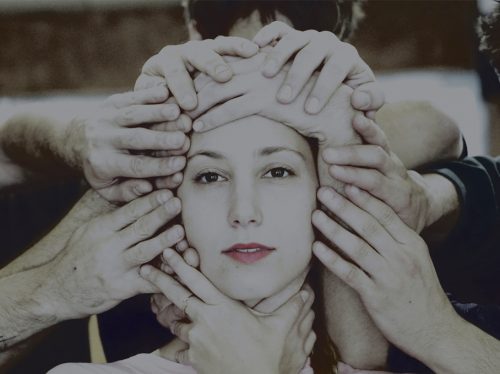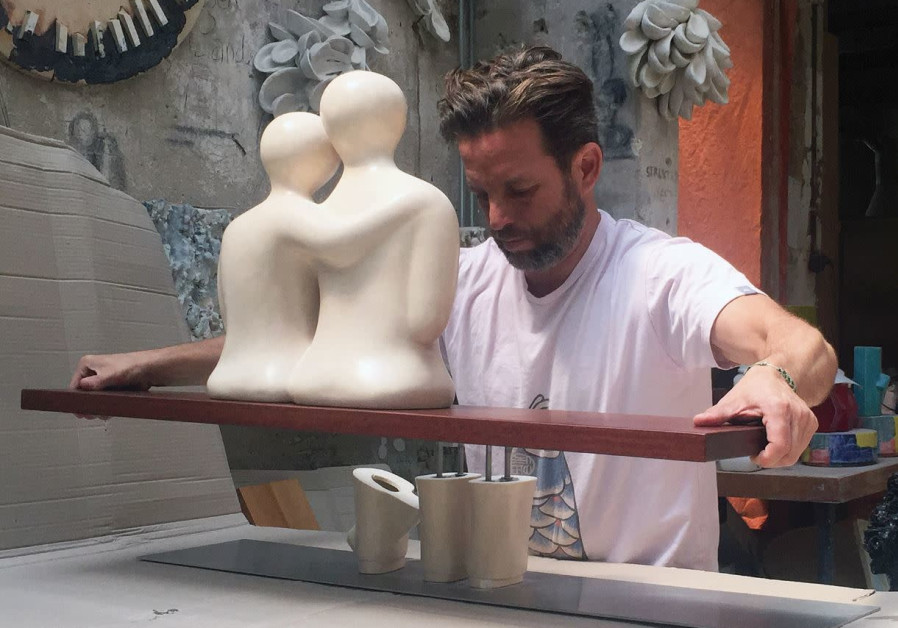
“Absorbing designs” By Barry Davis
Ram Katzir returns to Israel with the Vertigo Dance Company’s ‘Leela

RAM KATZIR. (photo credit: YOAV DAGAN)
Imagination is often an artist’s best friend, and Ram Katzir has a particularly fertile capacity in that regard. Katzir is a boyish-looking 50-year-old Israeli who has been living in Amsterdam for most of his life. He is currently over here to oversee the design of the set for Leela, the new production of the Vertigo Dance Company, choreographed by Noa Wertheim, and with Ran Bagno providing the musical backdrop. The curtain-raiser took place at the Suzanne Dellal Center in Tel Aviv on Monday. It will be followed by a second performance at the same venue on Tuesday, and slots at Hechal Hatarbut Hof Hacarmel, Ganei Tikva, the Jerusalem Theater and the Kibbutz Mizra Auditorium. There are also a couple of shows lined up for Italy in July.
The dance company blurb explains that the name of the new show in Sanskrit refers to “a divine play, an existence in which humans are mere pawns. Inspired by the fall from heaven, the creation Leela takes place in the space between illusive reality and God’s cosmic play.”
Relating to ethereal domains and working on three-dimensional projects suits Katzir down to the ground. For want of a more precisely defining tag one might call him a visual artist, but that misses many of the finer points of his creational mindset and artistic ethos. Katzir studied sculpture and photography at the Cooper Union School of Art in New York, and animation at the audio visual department of the Rietveld Academy in Amsterdam.
All of that comes into play in his work on Leela. He also fed off most of those disciplines in a previous stint with Vertigo. “In 2011, I was invited by Noa and Vertigo to be a guest artist with them at their village,” Katzir relates. Vertigo is based at Kibbutz Netiv Halamed-Heh near the Eila Valley, in the environs of Beit Shemesh, and operates from its own sanctuary, where the members of the troupe live and work together. That, naturally, helps to create a sense of unison, which translates into a more harmonious approach to their onstage work, too.
Katzir imbibed the familial vibe at the village, and left a mark or two on the physical aesthetics there. “I spent three months at the village. We had all sorts of plans for me to design a sculpture garden, and do something with the entrance to the village.” While Katzir is used to planning his project way ahead of time, and working to a schedule, at Netiv Halamed-Heh he found himself having to go with the Vertigo flow. “It is a dance group, which is the heart of the place,” he says. “There is the ecological side of the village, and they want to do all sorts of things, but I did help them a little with the design of the entrance to the compound. I also took some photographs of one of their performances.”
THANKFULLY, THAT wasn’t that for the Katzir-Vertigo creative synergy. “I was on a visit in Israel around a year ago,” Katzir continues. “I went to a Vertigo show at the Suzanne Della Center and after the show, I went over to say hello to people. Noa had already asked me to design a set for her – it was all from today-to-tomorrow stuff. I work with institutions, and I couldn’t free myself for that. But then Noa asked me to do something for Vertigo a year in advance, I said great.”
In the interim, Katzir kept tabs on Wertheim and the gang. “I’d just seen One One & One, which is the show of theirs I loved the most, and that gave me the push I needed to go for it.”
Even with his long years of experience, and the international acclaim he has accrued in the process, Katzir found himself doing his fair share of head-scratching. “It was a pretty challenging process – that’s an understatement.” Working with a dance company is a very different proposition compared with, say, creating a sculpture. One might have thought that creating a set for dance production would be a little easier, as the designer has something to feed off – the show – whereas with a sculpture the artist has to produce something out of a corporeal and visual void.
For Katzir it’s quite the opposite. “You have to cook something up with four other chefs,” he remarks, opting for a culinary line of explication. “You are all working on the same dish, and everyone pulls in their own personal direction.” That is a foreign state of creative affairs for Katzir. “I am usually the captain of my own ship, and I take care to ensure that the other ships around me are sailing in the same direction. Here I am one of the sailors on deck, which is fine, but you to have to know that the other deckhands are working on the same thing. You have to make sure that you and captain are in the same place. That was very challenging.”
That said, Katzir was more than happy to work alongside Wertheim. “Noa is very open,” he notes, although adding that he finds working on his own sculptures closer to his comfort zone. “My works of art are pretty conceptual, in terms of the fact that I first try to crystallize the message I want to convey – even if there are a number of messages – and then I look for most precise way to impart that. Here [with the dance production] it is far more abstract.”
Abstract? That’s a surprise. Surely, having an extant production to work with gives the set designer a springboard for his work. “Dance is the most visual thing there is, but on the other hand, we are trying to understand things like time, place, context, environment, and the answers I received about that were very abstract. That’s not a negative thing, but it’s very different compared with, say, building a set for a theater production which, for example, is set in 18th-century France, and there is housemaid and a count. At least, with that, you know what you are starting with.”
